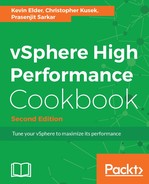Storage DRS makes sure that a VM's data is assigned to the optimal storage location initially, then it uses ongoing load balancing between datastores to avoid bottlenecks. Storage DRS provides smart VM placement and load balancing mechanisms, based on I/O and space utilization.
Similar to the vSphere DRS, aggregates the resources of several datastores into a single datastore cluster to simplify storage management at scale with vSphere SDRS. To create a datastore cluster, navigate to the storage view and click on the Create a new datastore cluster icon. Follow the wizard to create the datastore cluster:

During VM provisioning, Storage DRS provides intelligent VM placement, based on the I/O load and the available storage capacity of the datastores. Storage DRS performs ongoing load balancing between data stores to ensure space and/or I/O bottlenecks are avoided as per predefined rules that reflect business needs and changing priorities.
Similar to the vSphere DRS, SDRS also has a mechanism for placing VMs' data. It is called affinity and anti-affinity rule. But affinity and anti-affinity rules work on virtual machine disk (VMDK) and datastores.
By default, all the disks of a virtual machine can be on the same datastore. However, an end user might want the virtual disks on different datastores. For example, a user can place a system disk on one datastore and place the data disks on another. In this case, the user can set up a VMDK anti-affinity rule, which keeps a VM's virtual disks on separate datastores.
If you change the default setting of keeping VMDKs together, then Storage DRS will have far more options for moving virtual disks around, as it can make decisions per disk instead of per VM. By changing the default, Storage DRS will find the optimal placement per disk.
The VM anti-affinity rules keeps VMs on separate datastores. This rule is useful when redundant VMs are available.
The following is a table that specifies how it behaves in different cases:
| Intra-VM VMDK Affinity | Intra-VM VMDK Anti-Affinity | VM Anti-Affinity |
| Keep a VM's VMDKs together on the same datastore | Keep a VM's VMDKs on different datastores | Keep VMs on different datastores |
| Maximize VM availability when all the disks are needed in order to run | Rules can be applied to all, or a subset of, a VM's disks | Rule is similar to the DRS anti-affinity rule |
| Rule is on by default for all VMs | Maximize the availability of a set of redundant |

